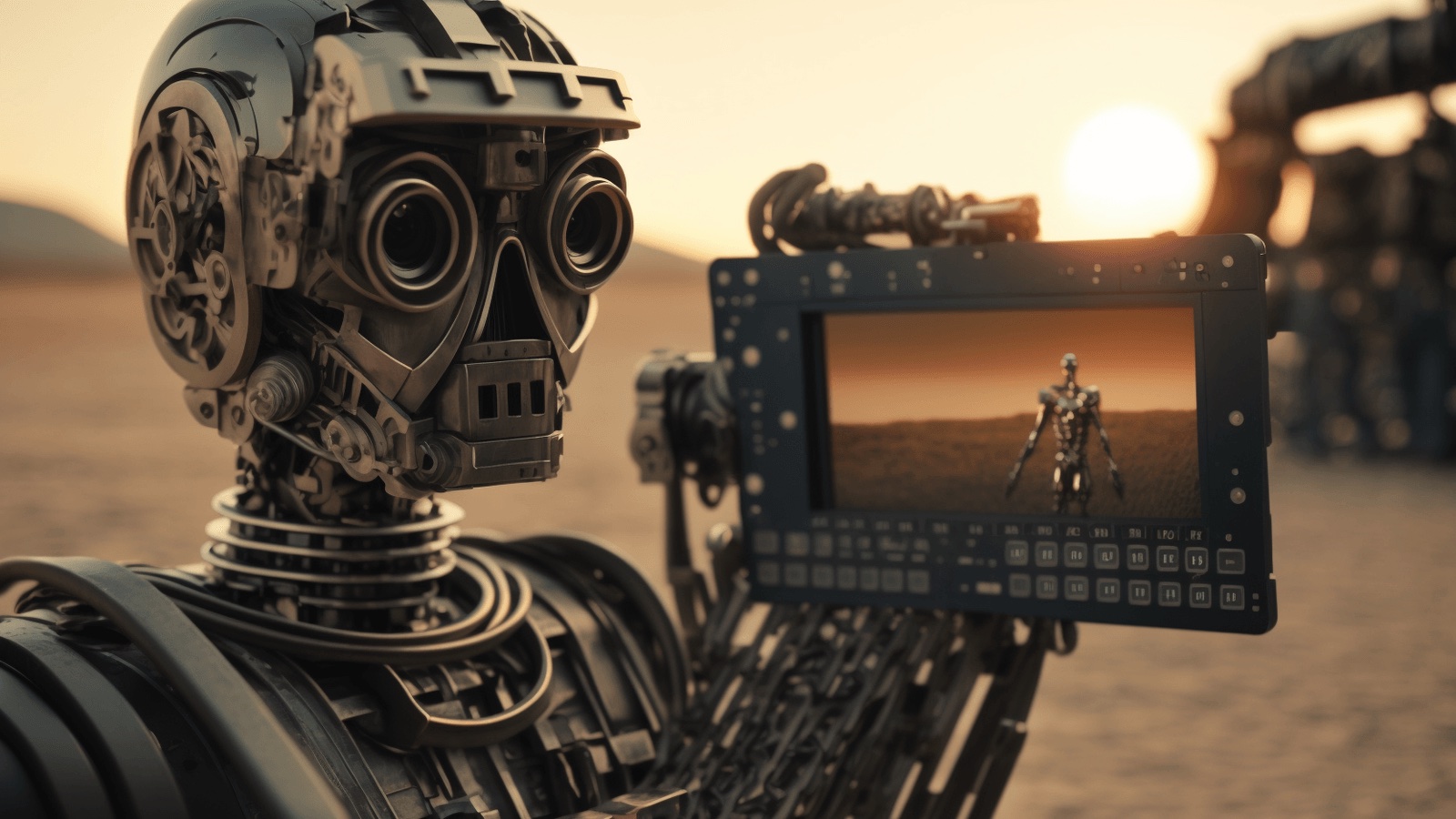Introduction
With the rapid development of artificial intelligence (AI), video production and editing have become more efficient, creative, and accessible. AI tools have not only changed the way professionals create content but have also empowered hobbyists and smaller businesses to produce high-quality videos without needing extensive resources. This article explores how AI is transforming the video production industry, including its benefits, challenges, and future potential.
The Evolution of AI in Video Production and Editing

AI technology has evolved to manage tasks that previously required human effort and skill. For example, traditional video editing involves organizing clips, adjusting audio levels, color correction, and effects, all of which are now possible with the help of AI-driven tools. These tools can analyze, edit, and even suggest improvements to footage in seconds, saving creators hours of manual labor.
How AI Simplifies Video Planning
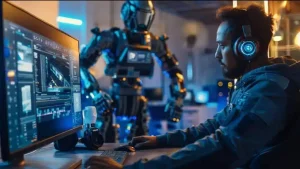
AI helps video creators during the planning stages by quickly gathering ideas and offering suggestions. By analyzing popular trends and viewer interests, AI tools can recommend themes and content ideas that are likely to attract audiences. This saves time and ensures that video creators focus on topics that will engage their viewers from the start.
Smarter Filming with AI Tools
AI-powered cameras and tools make filming easier and more accurate. These tools can automatically focus on subjects, follow movements, and adjust lighting without needing constant manual changes. This means video creators can capture high-quality footage with fewer mistakes. By using AI, teams can achieve professional-looking shots with minimal effort, even in complex shooting environments.
Faster and More Efficient Editing
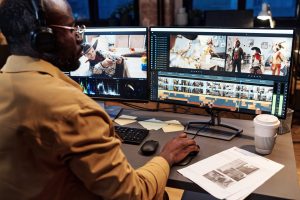
AI speeds up video editing by automating repetitive tasks. For example, it can quickly sort through hours of footage to find the best clips, arrange scenes, and add basic transitions. Instead of spending hours on routine tasks, editors can use AI to handle the basics, allowing them to focus on the more creative parts of editing. This results in faster video production times and makes video creation more enjoyable for editors.
Personalization for Better Audience Connection
One of AI’s strengths is its ability to personalize content. By analyzing viewer preferences and past interactions, AI can suggest specific edits or styles that match the audience’s tastes. This makes videos feel more tailored to the viewer, boosting engagement. Whether it’s choosing the right music or suggesting a unique color palette, AI helps create content that resonates on a deeper level with audiences.
Saving Costs with AI Technology

AI reduces production costs by automating tasks that would otherwise require multiple team members. From planning to editing, AI tools can handle a large portion of the video production process. This reduces the need for large crews and minimizes the time spent on each project, saving both time and money. For smaller video production teams or independent creators, AI offers a way to produce quality content without a high budget.
The Balance Between AI and Human Creativity
While AI is a powerful tool in video production, human creativity remains essential. AI can handle repetitive tasks, suggest ideas, and enhance efficiency, but it lacks the unique creative touch that only humans bring. The best results come when AI and humans work together, with AI managing the technical details and humans adding their personal style. This balance allows video creators to deliver engaging and polished content.
AI Tools in Video Production

AI-driven tools have become invaluable in the video production process. Here are some key areas where AI plays a crucial role:
1. Pre-Production
In the pre-production phase, AI tools help in brainstorming and scripting. Natural language processing (NLP) can analyze trends and suggest themes or topics that resonate with audiences. AI algorithms can also assist in casting decisions by analyzing actors’ past performances and audience reception.
2. Production
During production, AI can streamline camera operations. Automated cameras use AI to track subjects, adjust focus, and maintain optimal framing, ensuring high-quality shots with minimal human intervention. AI can also analyze lighting conditions and suggest adjustments in real time.
3. Post-Production
In post-production, AI’s impact is even more pronounced. AI algorithms can automate video editing processes, such as selecting the best takes, creating rough cuts, and even generating complete videos from raw footage. This drastically reduces editing time, allowing editors to focus on creative decisions rather than tedious tasks.
Key Benefits of AI in Video Production
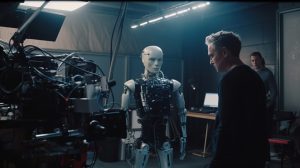
1. Time Efficiency
AI-driven tools can complete hours of editing in a fraction of the time, freeing creators to focus on storytelling and creativity. Automated features, such as trimming and scene selection, allow for quick first cuts, making the entire editing process faster.
2. Improved Quality and Precision
AI tools offer precision and consistency that can enhance video quality. For instance, AI algorithms can perform frame-by-frame analysis to stabilize shaky footage, smooth skin tones, or improve lighting. This results in a polished final product that meets high professional standards.
3. Enhanced Accessibility
AI-based tools have made video production more accessible to individuals and small businesses by providing affordable and easy-to-use solutions. Many online platforms now allow users to create professional-looking videos without needing complex software or technical skills.
AI-Powered Voice and Sound Editing
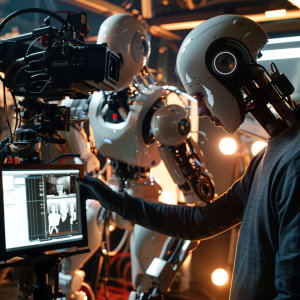
AI is also changing the way sound is edited in videos. It can quickly remove background noise, balance audio levels, and even suggest background music that fits the mood of a scene. With AI handling these tasks, video creators don’t need to spend hours adjusting audio manually. This makes the whole process smoother and ensures that viewers get high-quality sound without any distractions.
Automated Subtitle Creation for Accessibility
Adding subtitles is important to make videos accessible to everyone, including people who are deaf or hard of hearing. AI can automatically create subtitles by transcribing spoken words in a video. This saves time and helps reach a wider audience. With AI, subtitles can be generated quickly and accurately, making it easier for creators to add this helpful feature to all their content.
Improving Visual Effects with AI
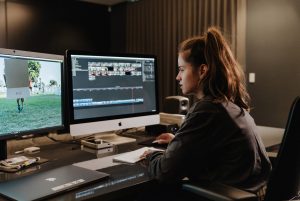
AI can add special effects to videos, making them more visually appealing. For example, AI tools can easily add filters, adjust colors, and even create realistic animations. In the past, these effects required skilled professionals and expensive software. Now, AI makes it possible for creators with less experience to add high-quality visual effects, helping them produce impressive videos.
Faster Social Media Video Creation
Creating videos for social media can be time-consuming, but AI makes it easier and faster. AI tools can resize videos to fit different social media platforms, add trendy effects, and optimize content for mobile viewing. This is especially helpful for creators who need to produce a lot of content quickly. With AI, they can create eye-catching videos that are perfect for social media in just a few steps.
AI-Based Recommendations for Video Length and Style

AI can analyze viewer habits and suggest the best video length, style, or format to keep audiences engaged. If a platform’s users prefer shorter videos, AI will recommend keeping it concise. For content creators, this information is valuable as it helps them tailor their videos to fit what viewers like best. By following AI recommendations, creators can increase the chances of their videos being well-received.
Easier Collaboration with AI Tools
AI tools also make teamwork easier. By organizing footage, marking key scenes, and suggesting edits, AI helps video teams stay on the same page. Team members can easily see what changes are needed and keep track of project progress. This smooth coordination allows for faster collaboration, especially when working with remote teams or freelancers, making the production process more efficient and organized.
Challenges of AI in Video Production
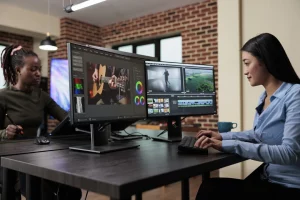
1. Limited Creative Flexibility
While AI tools can speed up basic editing tasks, they may struggle with more complex creative decisions that require human intuition. Balancing automation with creative control remains a challenge for AI-driven production.
2. Dependency on High-Quality Data
AI models rely heavily on large volumes of high-quality data to function effectively. Without sufficient data, AI may produce lower-quality edits or fail to adapt to unique projects.
3. Ethical Concerns and Deepfakes
AI can also be used to manipulate video content in ways that are deceptive or harmful. For instance, “deepfake” technology has raised ethical concerns regarding privacy and authenticity, prompting discussions around regulation and responsible AI use.
Future Trends in AI Video Production

1. Advanced Personalization
AI advancements will continue to improve personalization by automatically adjusting video content to suit specific audiences. This includes altering background music, adjusting visual styles, or even creating alternate scenes based on viewer preferences.
2. Virtual Collaboration Tools
As remote work grows, AI-powered collaborative tools will help teams work together more efficiently. Virtual editing environments and automated feedback mechanisms are making team-based video production simpler and more streamlined.
3. Real-time Editing and Augmented Reality (AR)
With real-time AI editing tools, live events and streaming platforms can benefit from instant editing features. In addition, AI and AR are being combined to enhance interactive content, making videos more engaging and immersive.
Comparative Table: Traditional vs. AI Video Editing
| Aspect | Traditional Video Editing | AI Video Editing |
|---|---|---|
| Time Efficiency | Labor-intensive, time-consuming | Fast and automated |
| Editing Accuracy | Dependent on human skill | Consistent and precise |
| Accessibility | Requires technical knowledge | User-friendly, accessible to all |
| Creative Flexibility | High, with human intuition | Limited, automation-focused |
| Cost | High due to manual labor costs | Lower, with automated processes |
Analysis Table: Pros and Cons of AI in Video Production
| Factors | Pros | Cons |
|---|---|---|
| Time Savings | Speeds up editing tasks | May overlook creative nuances |
| Enhanced Quality | Consistent color correction, stabilization | Quality dependent on data accuracy |
| Accessibility | Accessible for beginners, affordable tools available | Can produce generic, less personalized content |
| Data Dependency | Learns from large datasets for accurate editing | Ineffective with low-quality or limited data |
| Ethics | Creates opportunities for immersive content | Deepfake risks, misuse potential |
Conclusion
AI in video production and editing is revolutionizing the industry by making it more efficient, accessible, and dynamic. While AI tools offer significant advantages, including speed and quality, there are limitations to their creative flexibility. As AI continues to evolve, it will likely become even more integrated into production workflows, allowing for a balanced collaboration between human creativity and AI efficiency. Future advancements promise exciting possibilities, but ethical considerations will also play a critical role in shaping the responsible use of AI in this field.

